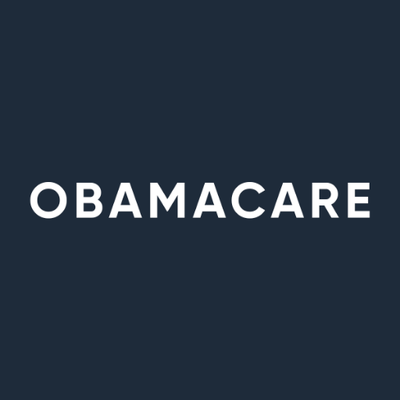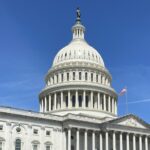Washington woke up from its latest fiscal standoff this week with the federal government reopened, hundreds of thousands of furloughed workers heading back to their desks, and a narrowly brokered bipartisan deal preventing what could have been a damaging holiday-season economic shock.
But the compromise that ended the shutdown came with a conspicuous omission: Democrats failed to secure an extension of the enhanced Affordable Care Act (ACA) subsidies set to lapse at year’s end — a political and financial time bomb already reshaping the 2026 insurance market.
The shutdown, which lasted 43 days, ended after Senate leaders on both sides — Majority Leader John Thune (R., S.D.) and Minority Leader Chuck Schumer (D., N.Y.) — agreed to reopen the government immediately and take up a vote in December on whether to continue the ACA tax credits. President Donald Trump signed the package within hours, eager to claim victory for reopening the government without conceding on Democratic priorities.
Yet the deal’s fine print — especially the absence of a guaranteed path for the subsidies’ extension — is reverberating across health insurers, ACA marketplaces, and millions of Americans bracing for sharply higher premiums.
Furloughed Workers Return, But Uncertainty Lingers
For the 800,000 federal employees furloughed or working without pay, the shutdown’s end brought immediate relief. Back pay will be disbursed over the next two weeks, according to an Office of Management and Budget schedule circulated Wednesday. Agencies from the FAA to the National Parks Service scrambled to restore operations, but union leaders warned that the shutdown’s aftershocks — delayed projects, worker burnout, and chronic staffing gaps — would linger well into 2026.
“People are relieved, but trust in Congress’s ability to govern is badly eroded,” said a senior official at the American Federation of Government Employees. “Each shutdown chisels away at morale.”
Economists warn that rolling shutdowns not only disrupt federal operations but dampen consumer sentiment. Household spending among furloughed workers fell noticeably during the impasse, and even a short disruption can shave a few tenths off quarterly GDP.
The administration, eager to project normalcy, framed the shutdown’s end as a bipartisan win. But Democrats privately concede they surrendered their most critical bargaining chip: protecting ACA enrollees from soaring 2026 premiums.
A Bipartisan Deal with a Big Asterisk
The fight over enhanced ACA subsidies — first expanded under the 2021 American Rescue Plan — has become a defining battle of the post-pandemic health-care landscape. The tax credits have kept premiums historically low, pushing ACA enrollment to record highs. But with the subsidies set to expire on December 31, insurers priced 2026 plans on the assumption that they would disappear.
Open enrollment is already underway, and the numbers are stark:
- Premiums are rising an average of 30% in HealthCare.gov states.
- State-run exchanges report average increases of 17%.
- Without the enhanced credits, some consumers may see premiums double or even triple.
- KFF estimates some households could face 114% higher monthly costs.
“In some respects, the damage is already done,” said John A. Graves, a health-policy professor at Vanderbilt University. “Insurers filed rates months ago expecting the subsidies to expire, and Congress didn’t act in time to influence the 2026 pricing cycle.”
Thune’s public commitment to a Senate vote in the second week of December offers Democrats a narrow path — but it’s a steep climb. Any extension would require 60 votes, meaning at least 13 Republicans must break ranks. Even then, the bill must pass a House whose Republican leadership has taken a hard line against what they describe as “temporary pandemic-era giveaways.”
Speaker Mike Johnson (R., La.) has refused to promise a House vote. A Democratic discharge petition, led by Minority Leader Hakeem Jeffries (D., N.Y.), is widely viewed as symbolic; it lacks the Republican signatures needed to force the measure to the floor.
Republicans open to a compromise want tighter income eligibility rules and an end to zero-premium plans, arguing that the enhanced subsidies distort the market. Any concessions would still raise costs for substantial segments of ACA enrollees — a politically risky outcome in an election year.
A Race Against the Calendar
Even if Congress passes an extension in mid-December, timing is its own enemy. Consumers must enroll by Dec. 15 and pay their first premium to secure coverage beginning Jan. 1. A late fix would not automatically lower January bills.
“If Congress passed something on December 12, it’s unlikely insurers could adjust in time,” said Cynthia Cox of KFF. Consumers would pay the higher premium for January and reclaim the difference only when filing 2026 taxes — meaning households would wait until early 2027 for relief.
Late legislative action could also create messy overlapping coverage. Someone switching plans after December 15 could end up enrolled in one plan for January and a different one beginning February, each with its own deductibles and provider networks.
The confusion risks suppressing sign-ups. “A large share of potential enrollees may simply assume Congress won’t act and decide not to enroll,” warned Gideon Lukens of the Center on Budget and Policy Priorities.
If the Credits Expire: A Bigger Shock Ahead
Should Congress fail to extend the subsidies, the fallout could be severe:
- The Congressional Budget Office projects 3.8 million people, on average, would lose coverage each year over the next eight years.
- Middle-income enrollees — who were newly eligible for aid under the enhanced subsidies — face the steepest increases.
- Low-income households would revert to the standard subsidy rules but would lose access to widely available no-premium silver plans, pushing many toward higher-deductible bronze plans.
Keep Americans Covered, an insurer coalition, issued a blunt warning: “Real people will pay a real and devastating price.”
Republicans, for their part, have floated alternatives, including diverting subsidy dollars into health savings accounts or flexible spending accounts. But policy experts say these proposals remain bare-bones and would likely leave many Americans paying more out-of-pocket.
“It’s unclear how any of these would actually replicate the affordability gains of the enhanced subsidies,” said Larry Levitt of KFF.
A Victory That Feels Like a Defeat
For Democrats, reopening the government without locking in the subsidies represents a strategic gamble — preserving fiscal stability in the short term while risking political blowback from frustrated ACA consumers next year. For Republicans, holding firm on the subsidies appeals to deficit hawks and the party’s conservative base but risks alienating suburban voters sensitive to health-care costs.
President Trump, who ultimately signed the shutdown-ending bill, has not publicly endorsed any subsidy extension. White House aides say he is “reviewing options,” a phrase widely interpreted as political shorthand for maintaining leverage.
As the dust settles from the shutdown, millions of Americans now face weeks of uncertainty — unsure not only of next year’s health-insurance costs but of whether Washington can muster the political will to avert a self-inflicted spike in premiums.
The government may have reopened. But for ACA consumers, the real crisis may just be beginning.
Disclaimer: The opinions and views expressed in this article/column are those of the author(s) and do not necessarily reflect the views or positions of South Asian Herald.






